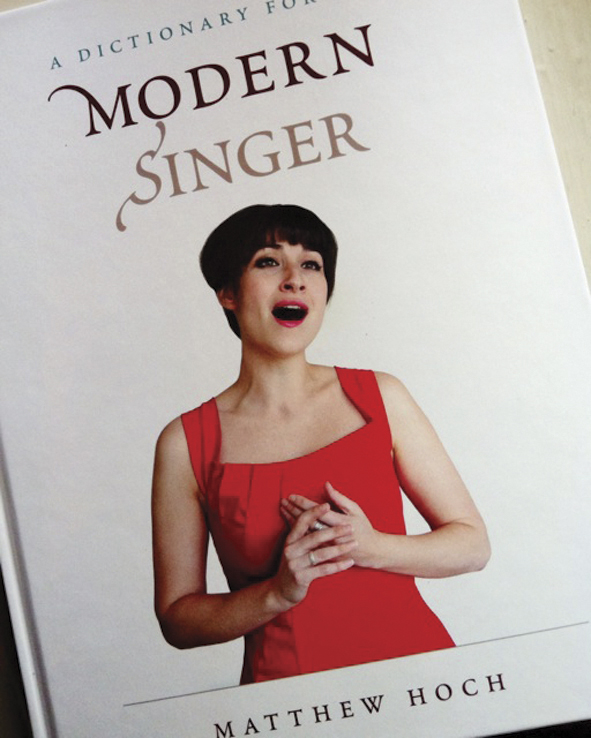Reviewed by Venanzio Valdinoci, journalist and singer
We know that voices are unique and personal. There are deep bass voices, high-pitched cutting voices and melodious mellow voices. Each of us changes the volume, intensity and rhythm of our voice to suit the context or the people we are talking to. In short, our voice expresses who we are, what our thoughts and intentions are and how we feel. So, how do you get a beautiful voice? How do you wade through the many terms during your first singing lesson: head voice, chest voice, portamento, rounded voice and so on? Acquiring a correct vocal technique, both for singing and speaking, takes time and commitment, but having the appropriate theoretical knowledge makes the learning process much easier. How do you master the art of breathing, what does ‘support’ mean?
Many of the answers to these questions can be found in Matthew Hoch’s book, A Dictionary for the Modern Singer. It is a wide-ranging and varied text, complete with illustrations and tables that show the specific anatomy of the organs and systems involved during the phonation process to use the voice correctly. The author is an assistant professor of voice at Auburn University, where he teaches applied voice, diction and an opera workshop. He earned his BM, summa cum laude, from Ithaca College, with a triple major in vocal performance, music education and music theory.
Encouraging and reassuring at the same time, the advice contained in the section ‘The Singer’s Ten Steps to Wellness’ curated by Karen Wicklund provides us with ideas and information to keep us in good health, not only to improve our singing, but also to achieve the correct balance between mind and body. Karen is currently teaching her SVS (singing voice specialist) certification training workshops in Chicago, Kalamazoo and Arizona.
Which repertoire best fits our voice, our age, our taste in music, the context in which we like to sing? John Nix, associate professor of voice and vocal pedagogy at the University of Texas at San Antonio (UTSA), coordinator of the Vocal Area for the 2011-2014 academic years, and founding director on the staff of the National Center for Voice and Speech in Denver, provides a clear overview of the different categories that should be considered when approaching this art form. His comments can be found in the chapter on ‘Criteria for Selecting Repertoire’.
In ‘Ten Tips for Making the Most of Your Time between Lessons’, Dean Southern systematically addresses the stages for achieving concrete and informed results. Baritone, Dean Southern has performed in opera, oratorio and recital throughout the United States and Europe, including Carnegie Hall’s Weill Recital Hall in New York, the Kennedy Center in Washington, D.C. and the Festival dei Due Mondi in Spoleto, Italy. Success in singing, like almost any worthwhile endeavour, is dependent on individual discipline, self-sacrifice and hard work. In ‘Vocal Wisdom’, the legendary pedagogue Giovanni Battista Lamperti is quoted as saying:
Know thyself applies to the singer more than any other profession because to sing well, body, soul and mind have to be tuned together. The only things you can learn from others are to breathe slowly and deeply; to pronounce correctly and distinctly, and to listen intensely and carefully. The coordination of these three must come from yourself. Know thyself.
Translated from the Italian by Mirella Biagi, UK/Italy

